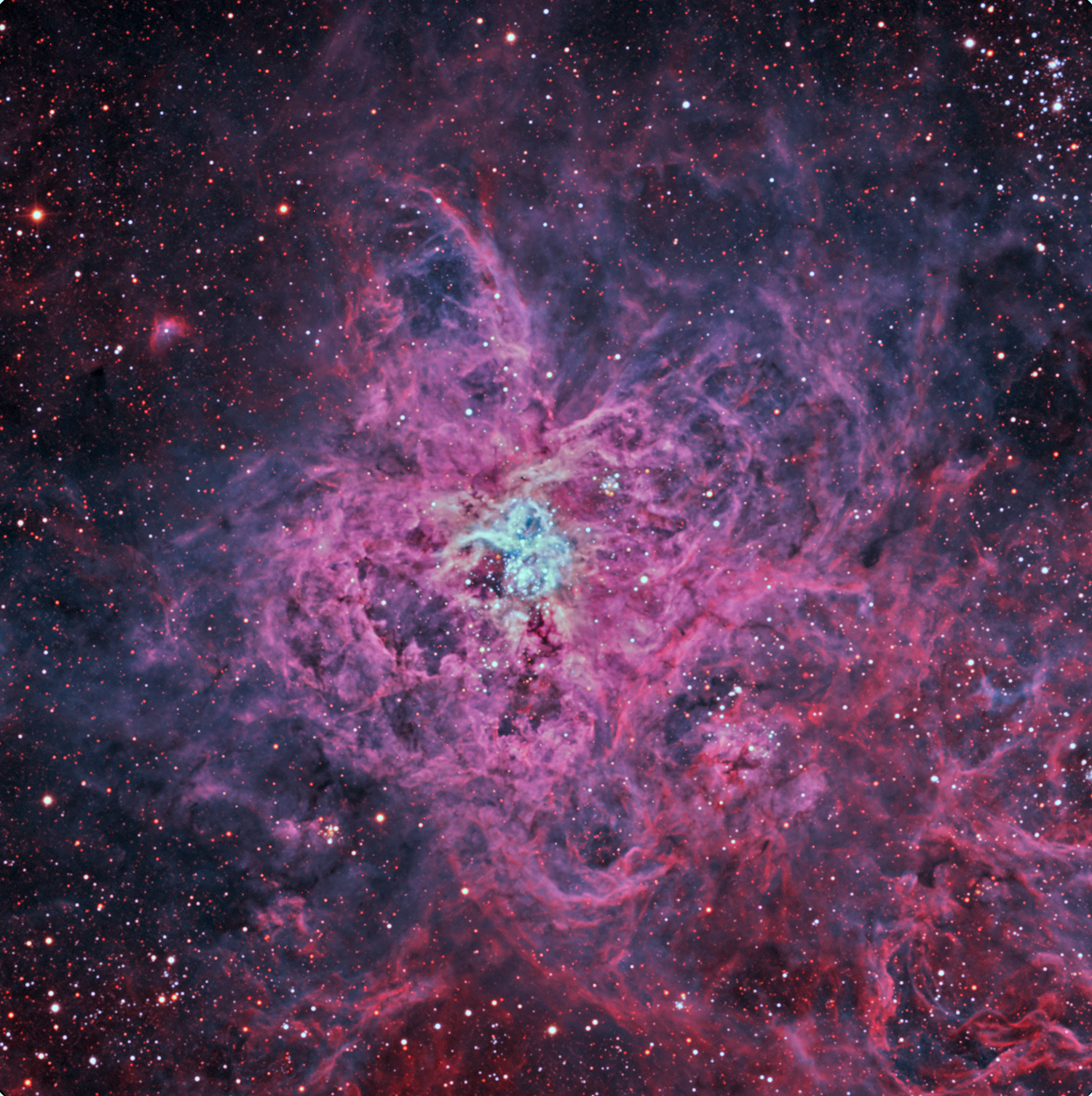This image shows the incredibly intricate and varied structure from the use of narrowband filters that significantly increase structural contrast. Similar to the Hubble Space Telescope’s (HST) "Pillars of Creation", this is a false color image, where hydrogen (H-a), oxygen (OIII) and sulfur (SII) emissions are color-mapped to green, blue and red, respectively.
For comparison, I’ve remapped the color to represent "natural" color in the image below which has been cropped and rotated to the conventional north being up. This version would be closer to what would be obtained with RGB filters, except the detail is much greater using narrowband filters.


